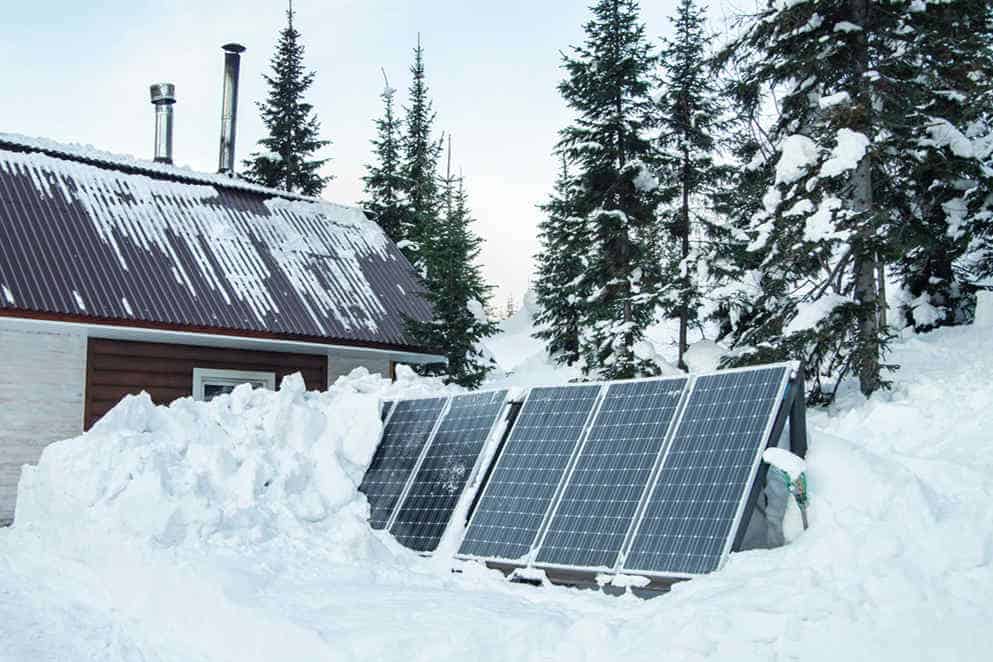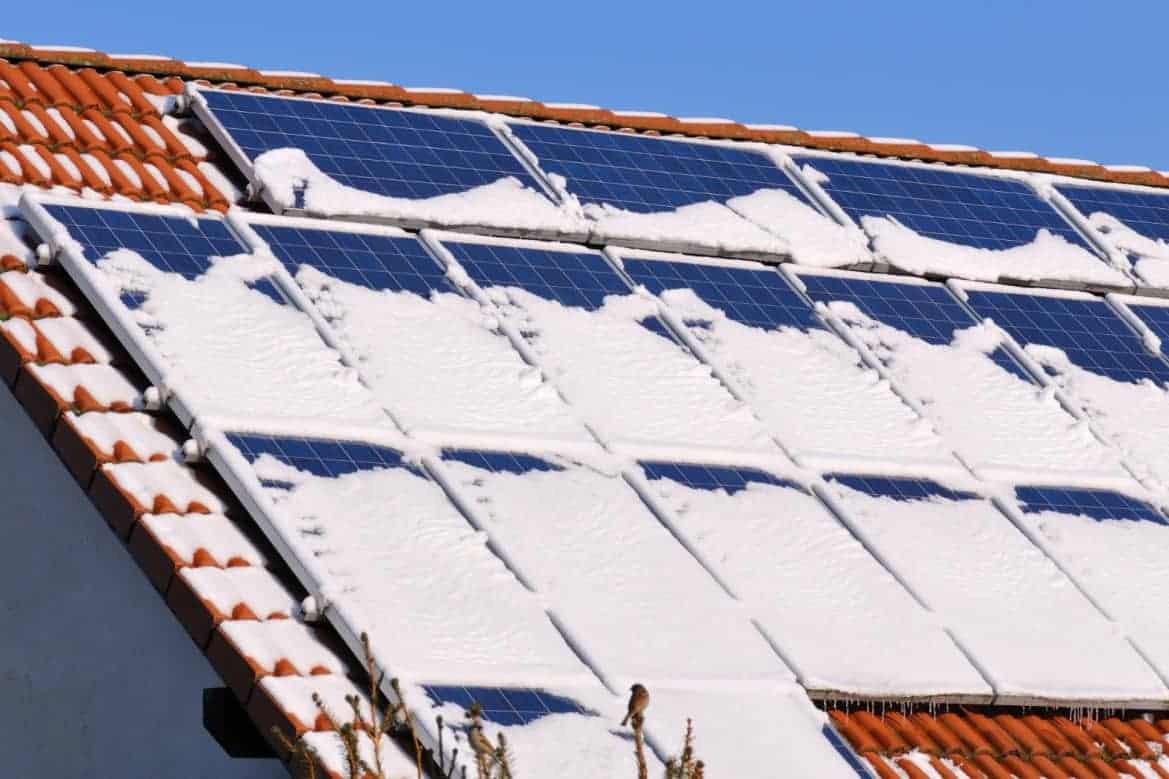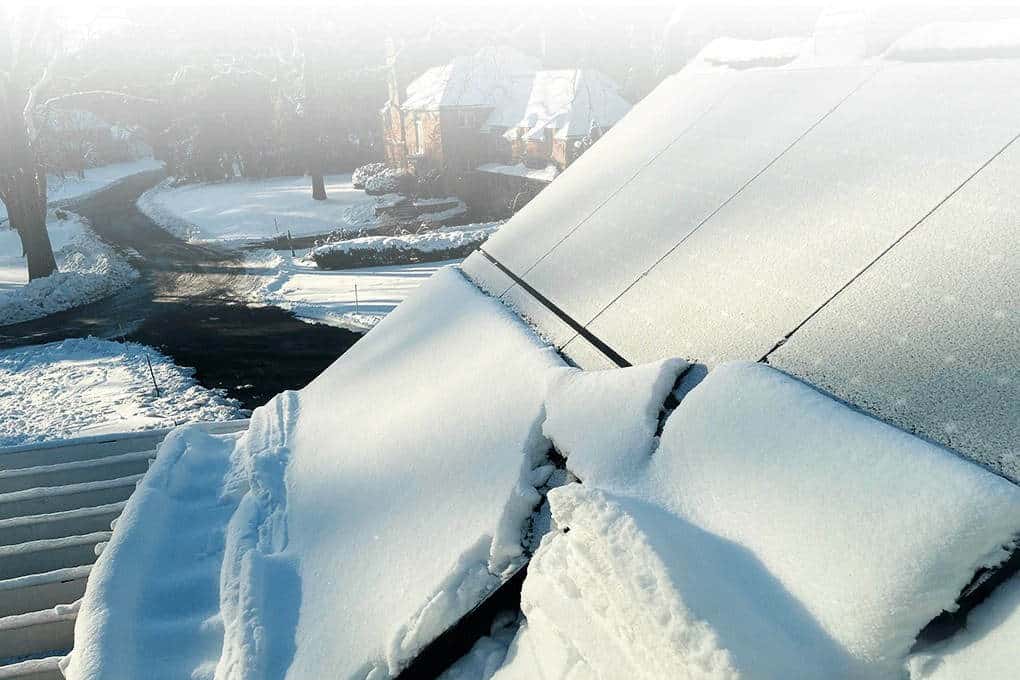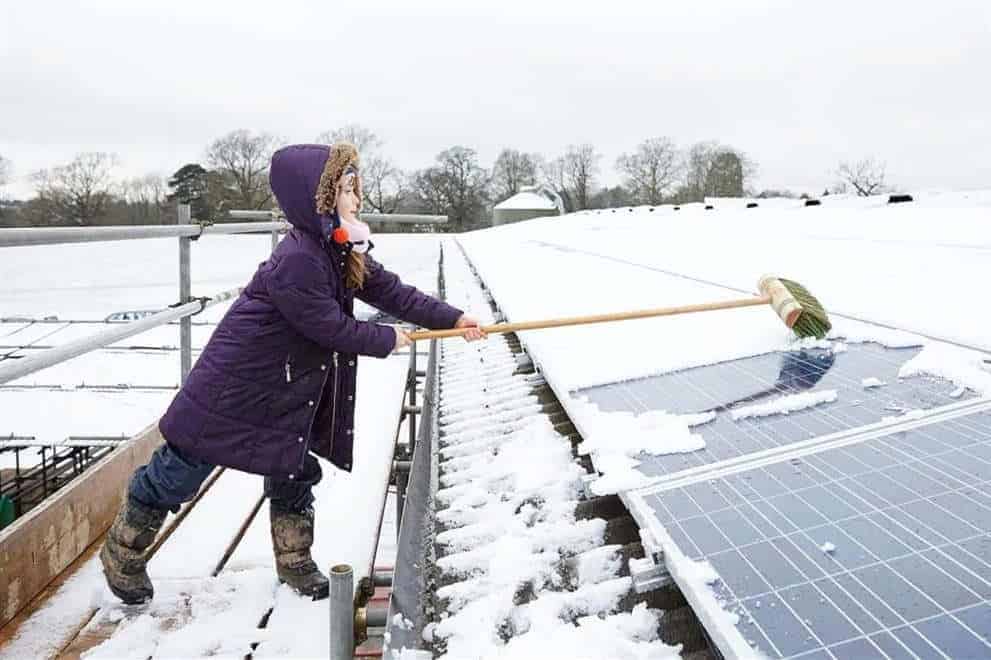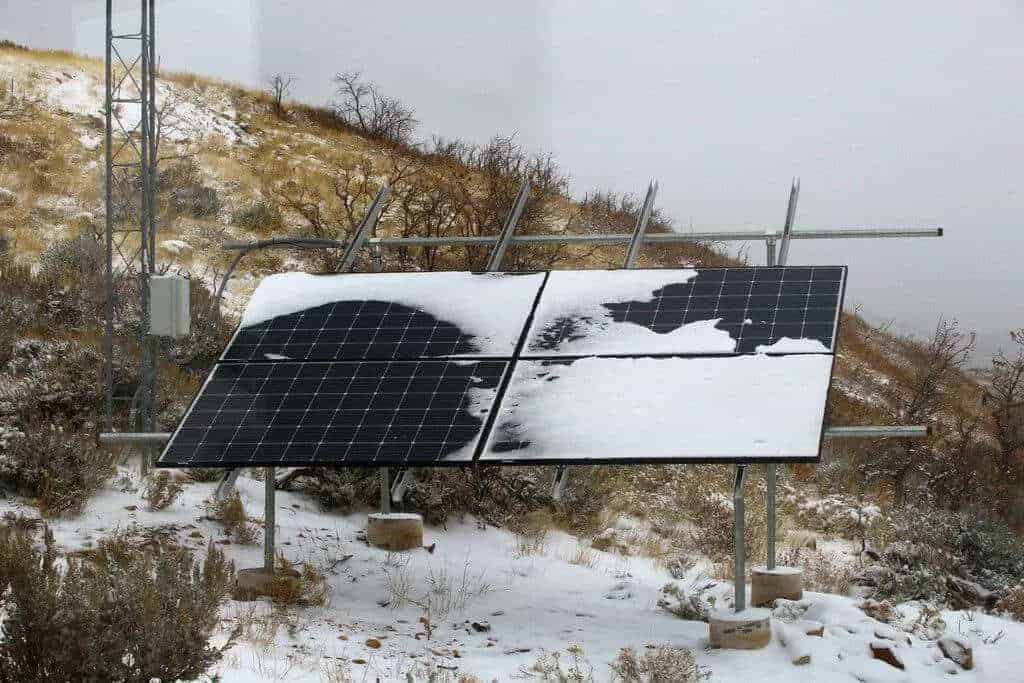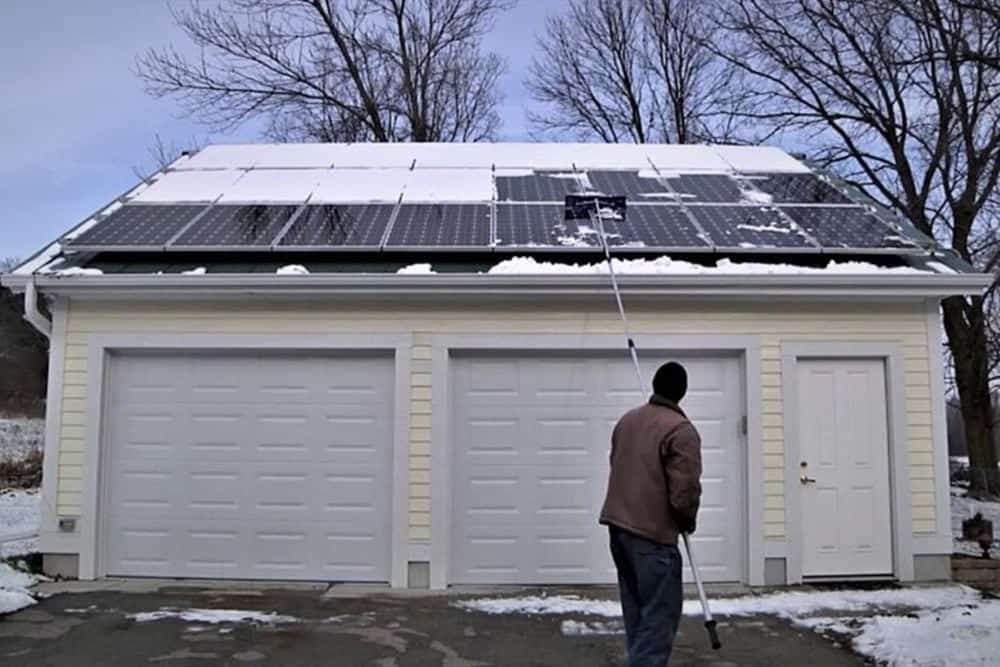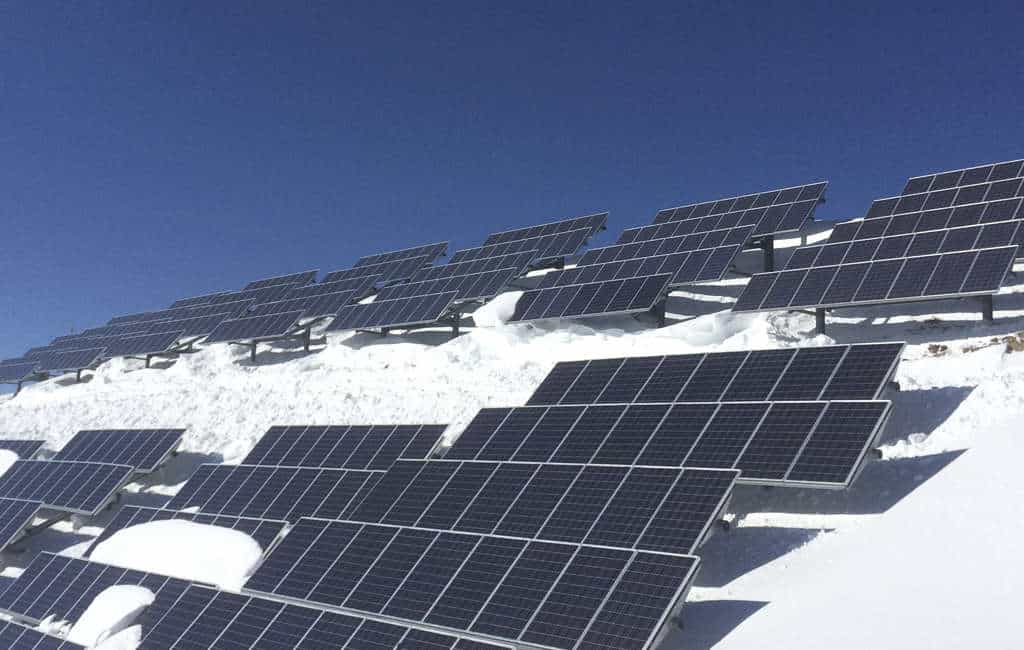In colder climates, homeowners who rely on solar power may face challenges during the winter season. One notable issue is the accumulation of snow on solar panels, which can decrease their efficiency and power output. It is important for solar panel owners to know effective methods to remove snow from their panels to maintain optimal energy production.
Various methods have been explored to achieve snow-free solar panels, from using simple tools like roof rakes to incorporating more advanced technologies like heating systems. In this article, we will look into different ways of keeping snow off solar panels and tips for maintaining their effectiveness during wintertime.
Common Methods to Remove Snow from Solar Panels:
| Method | Pros | Cons |
|---|---|---|
| Roof rake | Efficient at removing snow | Not suitable for heavy snowfall |
| Snow broom | Suitable for larger solar panel systems | Requires manual labor |
| Squeegee and brush | Gentle on panels and effective for light snow | Not suitable for heavy snowfall |
| Solar panel snow melting mats | Effective for melting snow | additional costs |
| Snow sensors and controllers | High performance and efficiency | additional costs |
Understanding the Impact of Snow on Solar Panels
Snow can notably reduce the performance and potentially affect the longevity of solar panels. The effects of snow on solar panel energy production and the risks of physical damage are important considerations.
Effect on Energy Production
When snow covers solar panels, it can reduce their energy production considerably. Light is unable to penetrate the snow, preventing the photovoltaic (PV) cells from capturing sunlight and converting it to electricity. Snow can reduce the efficiency of solar panels by blocking sunlight from reaching the PV cells.
Physical Damage Risks
While well-installed solar panels are built to withstand harsh weather conditions, snow can still pose physical damage risks. Heavy accumulation of snow and ice can add extra weight to the solar panels, possibly causing damage to the mounting hardware and the structure beneath them.
Moreover, freeze and thaw cycles can lead to the formation of ice dams on the solar panels, potentially getting trapped in the system and causing damage when it melts. It is essential to actively monitor and maintain the solar panels during winter months, ensuring that any risks associated with physical damage are minimized.
Safety Precautions Before Removing Snow from Solar Panels
Before you attempt to remove snow from your solar panels, it is essential to consider the potential hazards and take necessary precautions to ensure a secure and effective snow removal process.
Electrical Hazard Awareness
Make sure that all electrical connections are turned off before starting the snow removal process. Be mindful of any exposed wiring or damaged panels, as these can pose a risk of electrical shocks.
Slip and Fall Prevention
Falls pose a high risk of injury, especially when working on snowy roofs. To prevent slips and falls, always use appropriate safety equipment, such as a harness and anchor points. It’s essential to have a stable platform or ladder and avoid working on the roof during extreme weather conditions or high winds. If possible, consider hiring a professional or using a roof rake to remove snow from the ground.
Proper Protective Gear
Wearing the right protective gear is essential when removing snow from solar panels. Appropriate clothing and footwear can help keep you warm and provide traction on slippery surfaces. Here’s a list of protective gear to consider:
- Insulated waterproof gloves
- Non-slip boots with good tread
- Warm clothing layers, a hat, and a waterproof coat
- Protective eyewear, such as safety goggles or sunglasses
By taking these safety precautions into account, you can minimize the risks associated with snow removal and ensure your solar panels continue to produce clean energy efficiently.
Manual Snow Removal Methods
we will discuss various methods, tools, and tips for removing snow from solar panels. By following these guidelines, you can make the most of your solar panels even when faced with snowy conditions.
Considering the safety and efficiency, several manual methods can be used to remove snow from solar panels. These include tools such as roof rakes, snow brooms, squeegees, and brushes.
Roof Rake
A roof rake is a tool specially designed for snow removal from solar panels, roofs, and other surfaces. It has telescoping handles that can reach the rooftop while allowing the user to stay on the ground. This method ensures safety and reduces the risk of damage to the solar panels. However, it’s essential to use a roof rake with a soft or rubberized edge to prevent scratches on the solar panel surface.
Snow Brooms
Snow brooms are similar to roof rakes but have a wider and flatter head, making them suitable for larger solar panel systems. These tools have extendable handles and soft bristles, ensuring effective snow removal without damaging the panel surface. Snow brooms allow users to clear larger areas of solar panels with minimal effort and prevent snow from building up between the rows of panels.
Squeegees and Brushes
For a more targeted approach to snow removal, squeegees and brushes can be used. They allow for gentle yet thorough removal of snow from the surface of solar panels, with their rubber blades, can effectively remove melted snow, while soft-bristled brushes can gently loosen and brush away lighter snow accumulations.
Automated Snow Removal Solutions
Automated snow removal solutions can make the task of clearing solar panels more efficient and reduce manual labor. This section discusses three such solutions: solar panel snow melting mats, snow sensors, and controllers.
Solar Panel Snow Melting Mats
Solar panel snow melting mats are usually installed beneath the solar panels. They consist of heating elements, which generate heat when powered on, to melt the snow on the panels above.
Snow Sensors and Controllers
Snow sensors are designed to detect snow accumulation on solar panels automatically. When the sensor identifies a certain level of snow buildup, it sends a signal to a controller, which then activates the snow melting system. This can be done using solar panel snow melting mats, integrated heating systems, or other compatible heating technologies. Snow sensors can help maintain the performance and efficiency of solar panels by reducing the need for manual snow removal.
Controllers play a considerable role in automating snow removal solutions. These devices manage the operation of snow melting systems, regulating when the heating elements should be activated and when to stop them. Utilizing controllers can help to save energy and optimize the effectiveness of automated snow removal systems by ensuring that they operate only when needed.
How to Prevent Snow Accumulation On Solar Panels?
Proper Installation and Tilt Angle
A well-adjusted tilt angle allows snow to slide off the panels by gravity, reducing the need for manual cleaning. Ideally, solar panels should be installed at an angle that matches the latitude of the location to aid in self-clearing. It is essential to consult with a professional solar installer to determine the optimal tilt angle for your specific situation.
Installing a Solar Panel Snow Guard or Snow Fence
A solar panel snow guard or snow fence is a device designed to prevent snow from sliding off the solar panels in large quantities. These devices are installed in between or on the edges of solar panels and serve as barriers to hold back the snow. Snow guards or fences can be an effective preventive measure for keeping solar panels clean and functioning in snowy conditions.
Maintenance and Monitoring
Regular inspections help identify issues early, preventing potential damage to the solar panels and ensuring optimal performance. Homeowners should inspect their solar panels once a season or after heavy snowfall. During the inspection, check for any accumulated snow or ice, debris, or signs of damage to the solar panel system.
Additional Considerations
Local Climate and Average Snowfall
When planning for snow removal from your solar panels, it is essential to consider your local climate and average snowfall. The frequency and intensity of snowfall will affect the methods you choose and their effectiveness. For example, in areas with heavy snowfall, using a roof rake might be more suitable, while in areas with lighter and more infrequent snow, allowing the sun to melt the snow might suffice.
Additionally, knowing your local climate will help you determine the most suitable angle for your solar panels. This will not only optimize their performance but also facilitate snow removal by ensuring that snow naturally slides off the panels.
Insurance Coverage for Snow-Related Damages
Some insurers may have specific requirements or limitations when it comes to solar panel maintenance and snow removal. Make sure you understand these terms and conditions to avoid any coverage disputes or financial consequences in case of damages.
In some cases, it might be necessary to adjust your insurance policy to ensure adequate coverage for your solar panels. Consult with your insurance provider to explore your options and get the best possible protection for your investment.
Conclusion
Keeping snow off solar panels is crucial to maintain their efficiency and performance during the winter months. By combining these snow removal techniques and adhering to safety guidelines, homeowners can ensure their solar panels continue to function optimally through the winter months, maximizing renewable energy production and maintaining the benefits of solar technology.

